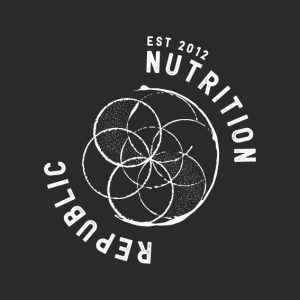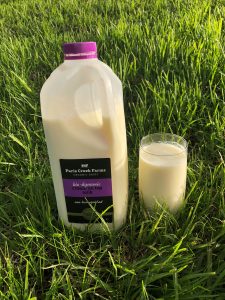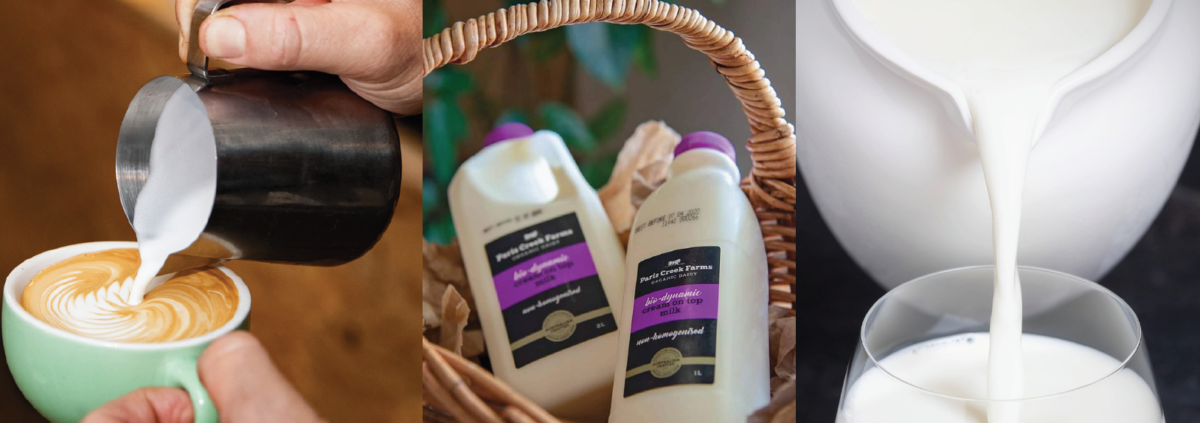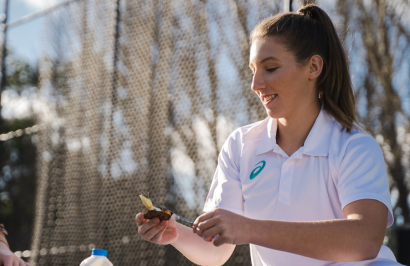Nutrition Republic’s Head Barista Ilija Sumracki shares his top tips on how to make barista-quality coffee at home using local ingredients, including Paris Creek Farms bio-dynamic milk.
1. It’s all about the beans
Tasty coffee starts with quality beans. There are many variables that influence coffee taste, bitterness, acidity and mouth feel. A lighter roast offers more citrus zing and acidity, while a darker roast has a deeper chocolate flavour and bitterness. We prefer a medium roast that creates a bold, strong, yet balanced coffee
2. Don’t forget the milk!
With milk-based coffees like flat whites, lattes and cappuccinos, the quality of your milk and how it’s textured or steamed makes a huge difference. Full cream milk will create a silky, smooth and sweet experience, while skim milk will offer a lighter mouth feel and coffee flavour. We only use Paris Creek Farms bio-dynamic milk as we believe the milk created by pastured, grass-fed cows is better for the environment and overall taste.

3. Know your machine
Having a machine that can maintain consistent and accurate water temperature, pressure and steam flow is essential. Using clean, pure water is also important as this can affect the taste of the coffee.
4. The right dose
Placing the right amount of coffee in your portafilter basket is key. For most set-ups, the coffee ground dose should be level with the top of your basket and create a complete seal. A different dose will offer a different taste so adjust to find what you enjoy.

5. Grind it up
The grind needs to be adjusted to create an even, balanced flow. If it’s too coarse, the water will flow too quickly creating a watery, sour taste at the front of the palate. If the grind is too fine, the water will choke up and flow too slowly creating a strong, bitter taste at the back of the palate.
6. Tamp pressure
The pressure of your tamp also effects the flow. Too much pressure and you’ll slow the flow, while not enough pressure means the grinds won’t compact and the water will flow quickly and unevenly. Balance is key so adjust and review as needed.
7.Milk jug
Under or over filling the milk jug will make hard to steam properly. Not enough milk and you’ll end up with a bubbly inconsistent texture. Too much milk and you’ll run the risk of flat, watery milk that may overflow and spill. About two-thirds of the jug is the sweet spot.

8. Getting steamy
The steam wand should be positioned between the centre of the jug and the outer edge at the four o’clock position. Place the wand at the surface of the milk and slowly raise it until the desired amount of foam is created. It should then be lowered slightly in the milk and held until the desired temperature is achieved. We steam our milk to a balanced 65 degrees which is a ready to drink, easy to enjoy temperature.
9. Mastering latte art
Before you pour your coffee, swirl around your espresso and milk for five seconds. Make sure to pour your milk as soon as possible after steaming as the froth will separate. Pour your milk into your coffee from a 15 centimeter height into the centre of the cup. When the cup is two-thirds full, lower your jug to pour the foam on top of the coffee creating the white latte art pattern. Play with this and have some fun!



